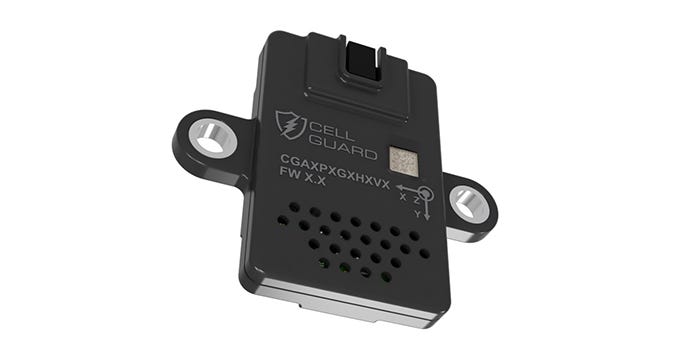New Battery Sensor Detects Thermal Runaway Incidents Seven Minutes Faster
In third-party tests, Metis Engineering's Cell Guard sensor outperformed competitors in detecting thermal runaway incidents.

Bristol, UK-based sensor developer Metis Engineering's Cell Guard sensor was recently highlighted in a publication by Sandia National Laboratories in the Journal of the Electrochemical Society, which shared evidence that the sensor may be a game-changer in battery safety: The sensor's groundbreaking capabilities were put to the test against competitors, revealing its efficacy in detecting thermal runaway incidents—a critical advancement for electric vehicles (EVs) and energy storage systems (ESS).
Unlike conventional Battery Management Systems (BMS) that primarily monitor temperature and voltage changes, Cell Guard provides comprehensive insights into lithium-ion battery pack health. By monitoring a spectrum of environmental parameters, including Volatile Organic Compounds (VOCs), pressure changes, humidity, and dew point, Cell Guard offers unparalleled accuracy and detail.

Cell Guard sensor. Credit: Metis Engineering
Additionally, an optional three-axis accelerometer records shock loads, offering crucial data for assessing impact damage and battery condition. Cell Guard is a further-developed successor to the company’s Production Battery Safety Sensor, discussed here in 2022.)
Sandia tests
In a comparative evaluation conducted by Sandia National Laboratories, Cell Guard surpassed two competing sensors, one designed for ESS and the other for EVs. Notably, Cell Guard detected thermal incidents significantly faster, providing critical early warnings and potentially preventing catastrophic battery failures.
Joe Holdsworth, Managing Director at Metis Engineering, expressed delight in the sensor's performance: “Not only did our sensor detect a thermal incident in under 60 seconds, the CAN data it provides could be used to inform the driver to stop and evacuate the vehicle.”
Cell Guard's superiority lies in its ability to provide vital data often overlooked by traditional BMS. It can detect cell venting—a precursor to thermal runaway—and relay data via a configurable Controller Area Network (CAN) interface for timely intervention. Moreover, its optional accelerometer monitors impact damage, offering insights for resale, repurposing, recycling, and insurance claims.
The sensor's active pack cooling feature monitors dew point, optimizing thermal management and preventing condensation-induced short circuits. Furthermore, Cell Guard's humidity sensor detects water ingress, a crucial indicator of potential issues within the battery pack.
While existing BMS systems have limitations in detecting battery pack health issues, Cell Guard supplements these systems, providing detailed information essential for early intervention and risk mitigation. Developed using ISO26262 processes and certified to ISO Automotive Standards, Cell Guard ensures robust quality and reliability.
About the Author(s)
You May Also Like





